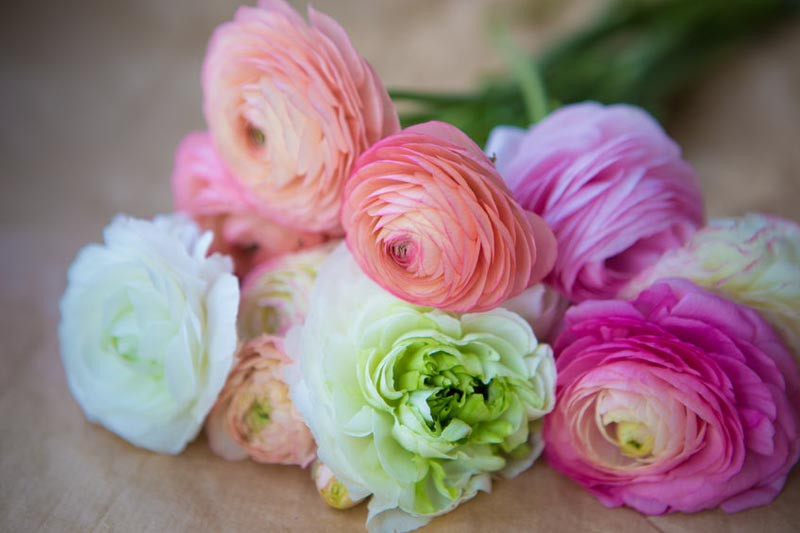Ranunculus
Ranunculus is a genus of flowering plants in the buttercup family (Ranunculaceae). It is native to Europe, North America, and South America.
Varieties: There are many different varieties of buttercups. The most commonly grown species is Ranunculus asiaticus. Other well-known varieties include the yellow ranunculus (R. ficaria), the white ranunculus (R. aconitifolius), and the red ranunculus (R. cymbalaria).
Appearance: The flowers are usually 2-3 inches in diameter and have multiple layers of thin, delicate petals that form a bowl-like shape. They come in a wide range of colors, including white, yellow, pink, orange, red, and purple.
Bloom time: The flowers can bloom for several weeks in the spring or summer.
Growing Conditions: These charming flower bulbs prefer cool, moist conditions and well-draining soil. They can tolerate some shade but prefer full sun. They can be grown from corms or seeds and are often planted in the fall for spring blooms.
Uses: Buttercups are popular in floral arrangements and bouquets due to their delicate appearance and long vase life. They are used in arrangements for weddings and special events or to brighten up a room at home. They can also be used as a bedding plant or in container gardens.
Toxicity: The plants contain a toxic compound called ranunculin, which can cause skin irritation and other symptoms if ingested in large quantities. However, they are not usually a concern for pets or humans unless ingested in large quantities.
Deer/rabbit: Rabbits and deer typically avoid eating ranunculus, making it a good choice for gardeners dealing with these types of wildlife.
Symbol: In the language of flowers, ranunculus represents charm, attractiveness, and radiance.
Overall, ranunculus is a popular and beautiful flower that can add a delicate touch to any garden or floral arrangement. With proper care and attention, they can produce stunning blooms year after year.

